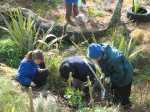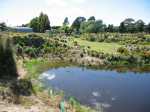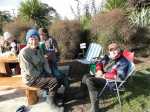Related resources
Regional
Accomodation
- YHA - Youth Hostel Association
- Centre Hill Cottage - Luxury organic farm retreat
- Manaaki Eco Farmstay B&B - Experience something special in sunny Purau Bay, 40mins drive from Christchurch
- Okuti Garden - Not your usual homestay, we've thought of calling it a 'garden stay'
- Springfield Holiday Lodge
- Geraldine Holiday Park
- Governors Bay Bed and Breakfast
Transport
- Jayride - Find or share a ride with Jayride, NZ's FREE rideshare community
- Alpha Campervans -
- United Campervans -
- Kea Campers NZ - Hire a KEA Camper and discover New Zealand!
- Apollo Motorhomes Holidays - Campervan hire
- Escape, Campervan hire -
- Britz Campervan and Car Hire
- Thrifty Car Rental
- Apollo Motorhomes Holidays
- Newmans Coach Lines
- Stray Travel
- Intercity Coachlines
- Kiwi Experience
Activities
- Alpine Recreation - Trek, Climb, Ski
- Banks Peninsula Track - Experience banks peninsula track
- Eco Tours New Zealand
- Kiwi Eco Tours
- Dolphin Watch Eco tours
- Drift Wood Eco tours
Prebbleton Nature Park
Provider: Prebbleton Nature Park
Region: Canterbury
Duration
Ongoing
Description
Prebbleton Nature Park is located on Springs Rd to the south of Prebbleton. It comprises 2.6 hectares of former gravel pit and rubbish dump. The area was leased for grazing until 2002.
In 2003, neighbour Michele Frey presented a concept plan to the Selwyn District Council. Her vision was to restore the natural habitat and create a recreation area on the site of the old gravel pit. The Council approved the idea, and the project is now a joint venture of the Selwyn District Council and Prebbleton Community Association.
When restoration efforts began, much of the site was covered in weeds such as gorse and broom. Volunteers and diggers cleared the weeds to make way for native plants. To date, over 7000 plants have been planted on the site. Hardy plants such as tussock, flax, toe toe, koromiko, kanuka, matipo, and cabbage trees are being planted first. as these plants grow and create shelter, woodland species such as kowhai, totara, kahikatea and lacebark are being polanted. smaller, threatened species are being included such as Olearia adenocarpa, Meuhlenbeckia astonii, M. ephedroides, Teucridium parvifolium, Coprosma intertexta, Euphorbia glauca.
All plants are sourced locally from Canterbury seed sources, with the goal of recreating a truly Canterbury landscape.
Plants are growing very well with the input of the volunteer group. Many native birds have come to live or visit here, invertebrate population is increasing. Skinks have also been abundant. People are using the park regularly now that is is open to the public.
Visuals



Skills required
Weeding, Mulching, Planting






